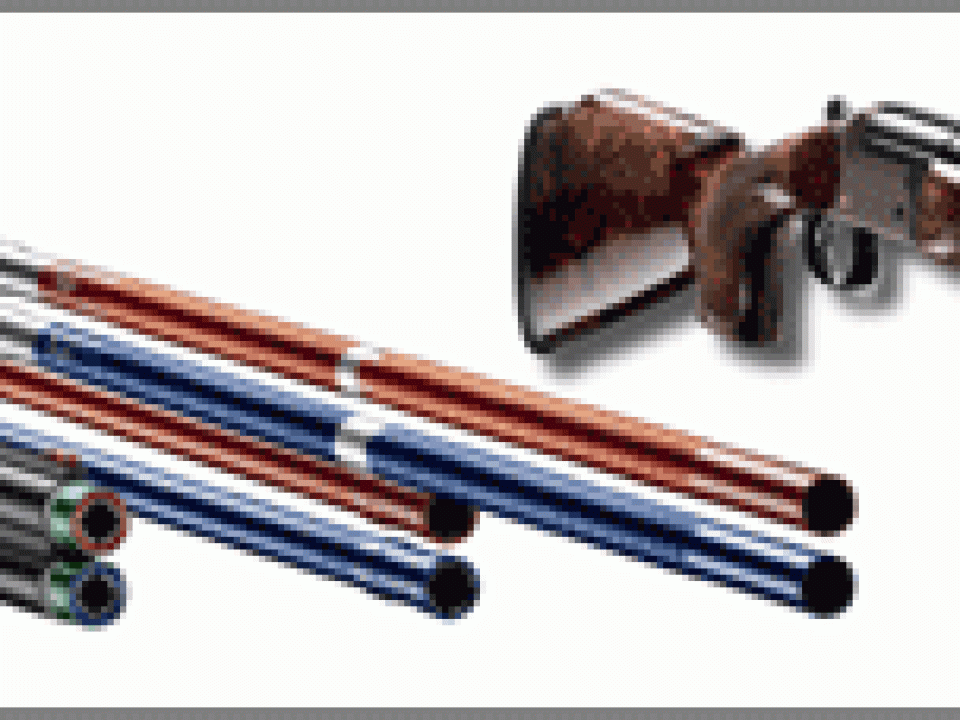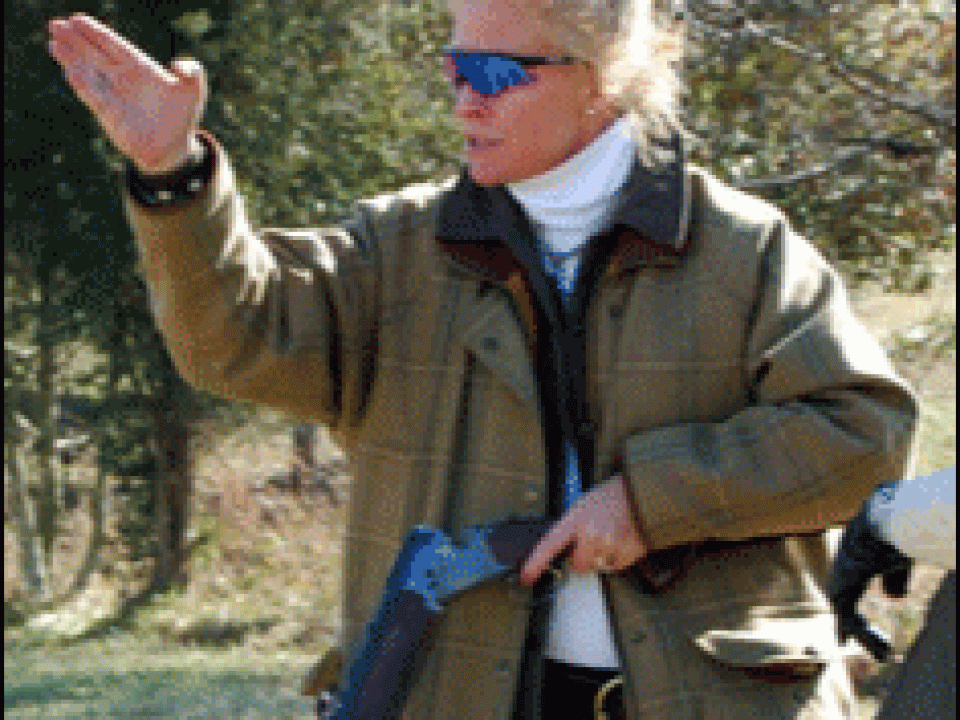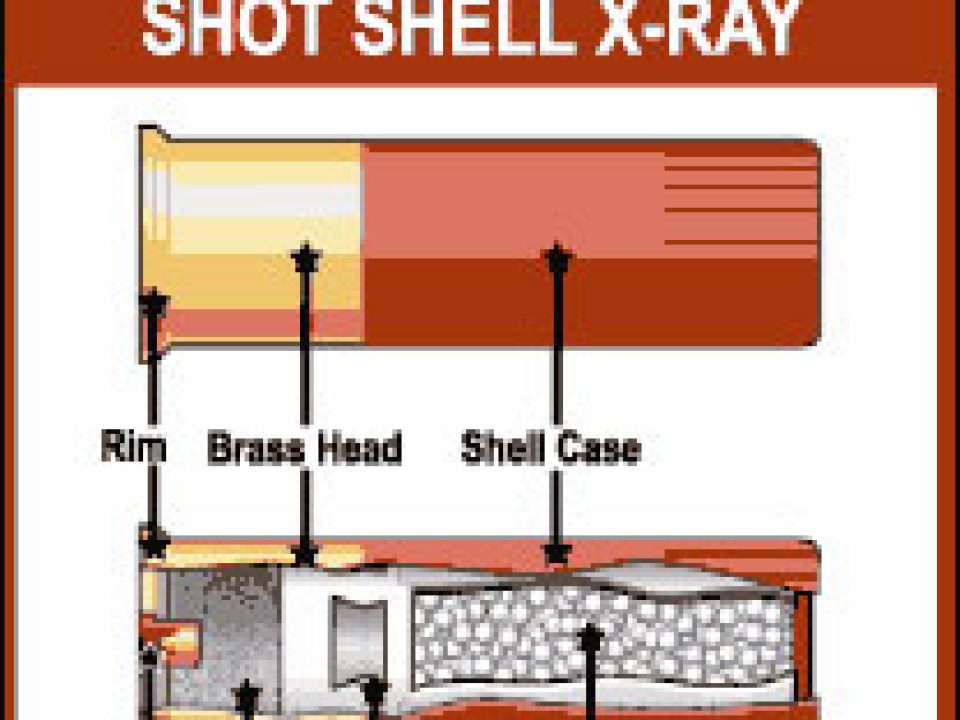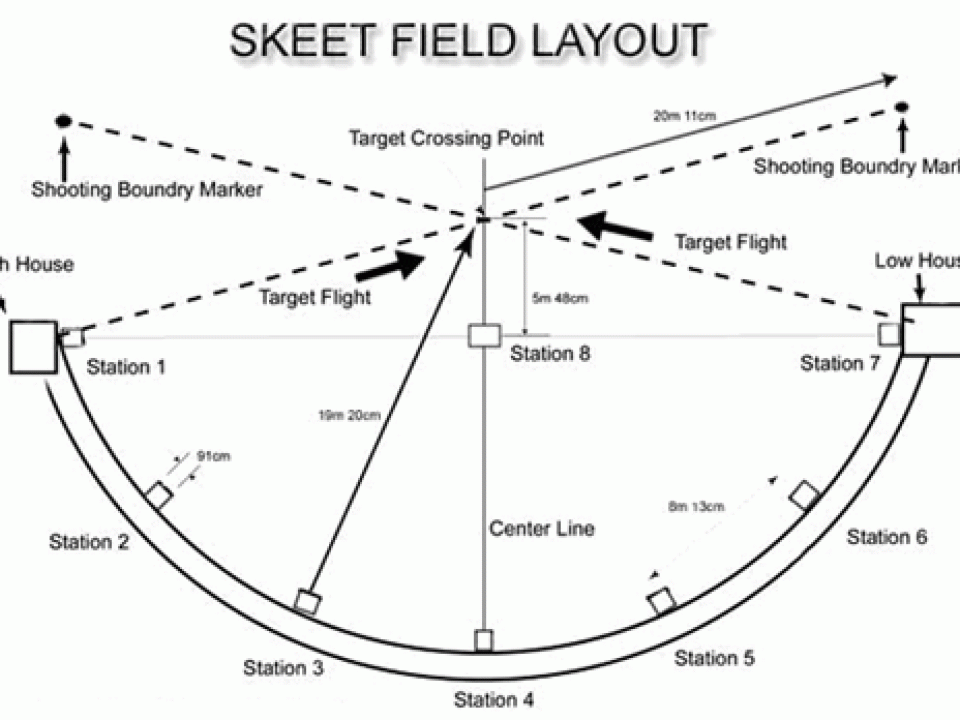Most people agree that baseball is the all-American sport. But after spending three days in San Antonio, Texas at the National Shooting Complex, I would argue that the sport which best captures the heart and soul of the American spirit is skeet.
Professional baseball has been battered by drug scandals, crass commercialism and outrageous salaries – giving a black eye to the American core values of fair play, self-determination and mutual respect.
By contrast, tournament skeet remains firmly in the stronghold of the shooter who competes for the love of their sport and a burning desire to win fair and square. While these birds certainly don’t have feathers, the hunger is still there to feed that great American quality of redemption – that you can always pick yourself up by the bootstraps to make a comeback target by target. It’s the grit of the individual and their gun forging their own destiny.
While professional baseball now finds itself pulsing through the digital infrastructure onto big-screen TVs and multi-media web sites, skeet holds fast to the ideals of craftsmanship in the hand-finished shotguns that still produce a streak of 500 or more consecutive broken targets.
Although the predecessor to the baseball bat may have helped primitive man fend off sabre-tooth tigers, it is the gun that won the American West – a part of the country I found myself in for three days in March.
As an avid recreational clays shooter, I became immersed in tournament skeet through a remarkable program developed by the National Skeet Shooting Association (NSSA) – the sport’s nonprofit governing body.
The NSSA and its sister group, the National Sporting Clays Association (NSCA), in conjunction with the state-level associations, keep track of just about every major skeet and sporting clays tournament in the U.S. The NSSA-NSCA is the repository for all registered scores shot in both large and small clubs throughout the country and in the world.
NSSA shooters often enter the realm of tournament skeet through grass roots organizations such as the 4H, which actively promotes skeet competition; through various instructors who want to see a promising student take their skills to the next level; or through local clubs where the NSSA sanctions competitive shoots.
But NSSA member, Stuart Fairbank, saw another way of opening the door of tournament skeet to recreational shooters. It’s called Shoot with the Stars, and it has been held at the annual Toni Rogers Spring Extravaganza, one of the earlier Top 10 shoots in the country that shooters use to open the tournament skeet season for three years. This year it took place March 27-29 at the NSSA-NSCA National Shooting Complex.
Although Stuart says the concept for this type of program had been around for the past 20 years, it was in 2007 that he teamed up with NSSA Secretary/Treasurer, Bob DeFrancesco, to really make it happen.
As Stuart explained it to me in the club house “There were always people who felt that the shooting games were exclusionary. They belong to a home club where they feel comfortable, but in terms of tournament shooting they have a hard time getting started. It can be confusing at first especially when you travel away from home and don’t know anybody at the shoot. And there’s the apprehension associated with meeting, and being squaded with, and competing against the big shooters. We want to make it as easy as possible for the new folks to experience a first-class tournament, meet and shoot with some of the best in the game, and do it all on manageable budget.”
For example, for someone like me who’s managed to shoot his fair share of 25 straight in skeet, it would be an absolutely intimidating proposition to go up against the likes of some of this year’s stars…
- Sam Armstrong, whose 12-gauge average in 2008 hit 0.9920 (meaning that he broke slightly more than 99 out of 100 targets in each competition).
- Dave Starrett, whose 12-gague average in 2008 was 0.9963
- Billy Williams, who had a 2008 12-gauge average of 0.9907
- Tami Meyers, with a 12-gauge average of 0.9826 in 2008
- Bob DeFrancesco who racked up a 20-gauge average of 0.9958
Of course registered tournaments do not directly pit the new shooter against these stars, or the other stars who participated in the program including John Shima, Stuart Fairbank and John Herkowitz. A classification system that ranges from top-ranked AAA to E shooters ensures competitive equilibrium. I had been ranked D, given that I had registered for a single tournament skeet shoot in 2007.
Turns out, I was exactly the kind of shooter that Stuart wanted to attract through Shoot with the Stars.
Stuart believed that the sport needed to create “ambassadors,” or recreational skeet shooters who were given the opportunity to mingle with the stars, and then go home and spread the good word.
So in 2007, Stuart and Bob posted the first Shoot with the Stars call on the Internet, attracting three shooters. Over time, a selection process was put in place. The names of up to 27 shooters would be drawn – three from each of the organization’s nine regional zones.
This year there were 15 recipients including myself, since I was the only one to apply from Zone 2.
The 2009 sponsors were Ms. Toni Ann Rogers (Title Sponsor), Federal Ammunition, Browning, Rio Ammunition, Kolar Arms, Remington Arms (.410 bore), Winchester Ammunition (28 gauge), While Flyer targets, leathersmith Al Ange and the NSSA as sponsors.
With sponsors and organization in place, the 2009 Shoot with the Stars gave us newcomers 100 shells in each gauge (12, 20, 28 and .410 bore) for use in the competitions, plus they waived our entry fees in each event of $50 and the nominal target fees that came to $6 per day. The Shoot with the Stars program also provided the experience of a lifetime (for skeet shooters this is tantamount to playing golf with Tiger Woods).
My Shoot with the Stars adventure started when I landed at San Antonio International Airport at about noon on March 26th. After renting a car, I headed directly to Blaser USA in San Antonio, the U.S. arm of the German manufacturer that makes the marvelous F3 shotgun.
GIF


The Blaser F3 American Skeet Combo
Having shot an F3 before, I knew it would be the gun to shoot. Here’s why…
- The F3’s 100% mechanical, single-selective trigger functions at a light 3.3-lbs trigger pull. The hammers of the F3 move in a linear plane – straight forwards and then backwards when the gun is re-cocked. Typically, most hammers pivot around the pin in a lower efficiency arc. This design gives the gun a crisp, confident feel every time you pull the trigger.
- You can adjust the trigger blade length for a precise fit.
- The gun’s Inertial Block System prevents double, or fan, firing. It’s coupled with a mechanical trigger group that doesn’t rely on recoil to set the second shot. If you get lucky and hit your first shot with a poofer, the next shot will fire regardless.
- The F3’s receiver measures a sleek 2.415 inches high at its tallest point, making it one of the lowest-profile shotguns on the planet. Blaser managed this engineering feat by streamlining the conventional lock. The gun’s low-profile receiver, and its low axis, help reduce felt recoil by directing the shock wave through the most dense part of the stock. This would be important in shooting 200 competitive rounds per day, plus several rounds of practice.
- The balancer in the stock is a cylindrical weight on a long threaded screw. You can move the weight up or down to find your perfect balance. The additional weight in the stock also helps absorb recoil.
- With Blaser’s Ejection-Ball-System, the ejector springs are cocked automatically when the shot is fired and the gun is opened. This feature virtually eliminates hulls sticking when you crack open the gun.
- The grip has a substantial palm swell.
- At 8 lbs, 7 oz, the gun has a near perfect weight for recreational skeet shooters (tournament skeet shooters are known to add weight that could bring their guns to over 9 lbs for controlled swing momentum).
Norbert Haussmann, CEO of Blaser USA, had arranged for me to pick up the perfect 12-gauge model for Shoot with the Stars. It had a Monte Carlo stock complemented by an adjustable comb. The barrels were 30 inches in length. The lid of the hard case held three sets of Briley Revolution tubes in 20 and 28 gauges and .410 bore. Along with a full set of chokes, Blaser packages this F3 as the American Skeet Combo. And I have to say, it is really impressive.
After a Blaser tech tweaked the comb for me, the gun came up just right. If ever I were going to shoot a great game of skeet, this F3 would be the shotgun to make it happen.
Mother Nature, however, had other things in store.
Before leaving for San Antonio, I had checked the weather. It was supposed to be sunny, mild and in the mid-80s. It didn’t exactly turn out that way.
The next morning saw prevailing winds of 20-30 mph with gusts to 40 mph. For a flying disc such as a skeet target, winds that high create crazy turbulence.
GIF


Winds hit 40 mph
Air density, drag coefficient, angle of attack – everything is up for grabs as the wind blew across the open, flat terrain of the National Shooting Center.
If the target is going with the wind, it can race out of the trap house with an afterburner burst, and then get driven into the ground even before it reaches the opposite house.
If the target is going into the wind, it can simply rise and stall – one of the worst things that can happen to a shooter who uses momentum to swing through for the target break.
Then there’s the ongoing debate as to whether or not it’s best to break a target in the wind sooner or later. Some experts believe that you should break the target as soon as possible before the wind knocks it off the line of trajectory. Others, meanwhile, say you should wait until the target adjusts to the wind before pulling the trigger.
All I can say is that conditions were not great to shoot the first event of the tournament, which was doubles (when the high-house and low-house targets are thrown simultaneously).
Of the 45 skeet fields at the National Shooting Complex, I was slotted to shoot on number 9. My squad star would be perennial All American Sam Armstrong from Maryland. At least it was a 12-gauge event (imagine if it was .410).
Introductions and hand shakes all around among the five squad members and we were ready to shoot. During the 100-round event, I was surprised at the ongoing chatter of encouragement. If someone made a great shot, the others shooters in the squad let him know about it. When you stepped up to the station, you were given a pep talk – “You can do it…come on, get in the groove, crush ’em now…”
Turns out it was the unspoken code among tournament skeet shooters. You helped your competitor achieve their fullest potential in the preliminaries and then faced him head on in the shoot-offs. This friendly banter contributed to a real sense of family among the shooters – even for a newcomer like me.
For Sam and the other highly ranked shots, doubles took on a beautiful cadence: BANG…1 Mississippi…BANG. It was the veritable heartbeat of doubles. Consistently, they knew the rhythm of the game and mastered it.
GIF


Irwin Greenstein with Sam Armstrong
My final score was 57. Not great. It turns out, I made a couple of mistakes when it came to shooting in strong winds, which were explained to me over dinner that night with Sam and his friends at a Saltgrass Steakhouse.
First, by following the school of thought that says you break the targets close to the house in the wind, I held the Blaser further back than usual. The gun swung so beautifully, I figured it would be no problem nailing that target right out of the house before the wind could grab it.
I found out afterwards that you do just the opposite when shooting in the wind. You hold further toward the center stake. By reducing your gun swing, you stand a better of chance of breaking the target as it slows down, as opposed to attempting to shoot it when it comes accelerating out of the house.
Another mistake I made was shooting the target when it stalled in the wind. For example, if I were shooting the low 1, and it stalled right in front of me, I ended up missing the target. I was wondering how was that was possible? After all, the target was stopped dead; it was close enough to be hanging right off the brim of the cap. How the heck could I possibly miss that target?
The answer was simple: I had unconsciously lifted my face off the stock to look at the unusually high targets. Break that seal between your cheek and the stock and you’ll miss the target every time – even if the bird is dangling three feet in front of you.
My third mistake was trying to measure the target lead in the wind. If you look for the lead, you invariably take your eyes off the target – or worse end up glancing at the front bead. Either way, the target will get away from you.
OK, lessons learned. But would they stick? Let’s see how I would shoot the next day.
Right after the alarm clock went off, I checked the weather on my iPhone. Wind was blowing at 15 mph, with gusts reaching 23 mph. Certainly challenging, but not as daunting as the day before.
When I arrived at the National Shooting Complex that morning, one word dominated the communal conversation: wind. One of the stars confided later that he had not missed a single 12-gauge target since August 2006 – until doubles the day before when he shot a 98.
Other top shooters said “the wind got to me.” What did they mean by that? A strong, relentless wind can make you tense your muscles, slowing you down. Likewise, a sense of exhaustion sets in, both physically and mentally. Unlike them, I never expected to shoot 100 straight, often the threshold for entering the shoot-offs. While a 97 or a 98 would be great for me, it was unacceptable in the rarefied ranks of AAA skeet champs.
I had two events scheduled for that Saturday. I would shoot 12 gauge at 10:30 and 28 gauge at 3:00. I was optimistic. At least 12 gauge gave me the firepower for a wider margin of error in the wind. When it came to 28 gauge, I’d been shooting it for the past year at my local club. I think it’s the perfect gauge for skeet, and I had recently nailed my first 25 straight in 28 gauge.
Stuart Fairbank, a multiple World Champion from Connecticut, turned out to be the star of our 12-gauge squad. An affable guy, he really kept up the chatter – giving the squad a positive vibe through all 100 rounds. My final tally for the event was 81. I have to give ample credit to the Blaser for what I thought was a good score. It performed flawlessly, giving me great site pictures, a controlled swing and a comfortable shooting experience.
GIF


Stuart Fairbank with Irwin Greenstein
With a few hours remaining until the 28-gauge event, I paid a visit to the NSSA-NSCA Museum on the grounds. The museum included a history of skeet with wonderful artifacts. There were Hall of Fame Photos for both skeet and sporting clays and some entertaining videos to watch.
After the Museum, I walked across to the concession and ordered a tasty pulled-pork sandwich. I took the sandwich onto the patio and watched the other events as I ate.
At about 1:30, I installed the 28-gauge tubes from the trunk of my rental car. They went in like butter. After I shot two practice rounds, I knew 28-gauge would be intimidating.
Everyone says that regardless of the gauge, you always shoot the target the same way. Keep your hold points and break points consistent, whether it’s 12 gauge or .410. However, here’s the rub: A standard 12-gauge 1-1/8 oz shell with #9 shot holds about 658 pellets. A standard ¾ oz, 28-gauge shell with #9 shot has about 439 pellets – or nearly 50% fewer pellets. For the highly ranked shooters, the lower pellet count wouldn’t make that much of a difference. But I needed all the help I could get as the sundowner wind started to kick up, fulfilling the prediction of 23-mph gusts. In the end, I shot a 67.
My 28-gauge star was multiple World Championship winner Billy Williams from Montana, the only one of two shooters to score perfect 100’s in doubles the day before. Throughout the event, Billy was a master of encouragement, leading the squad in a chorus of positive banter. Even with my less-than-stellar 67, it was a joy to shoot in that squad. By now, I was starting to feel like an NSSA son-in-law.
GIF


Billy Williams with Irwin Greenstein
That night, the Party on the Hill was held in the massive Beretta Pavilion. A Mariachi band entertained as free Mexican food, cocktails and beer from a keg were served. From this vantage point, you could look down across the great expanse of the National Shooting Complex and the Hill Country Beyond. It was a clays shooting paradise.
Sunday morning saw me slotted for two events. At noon, I would shoot 20 gauge with star, Bob DeFrancesco, NSSA Secretary/Treasurer and many time All American from Connecticut. My .410 event would take place at 4:30 with star, Dave Starrett, another multiple World Champion winner from Ohio. The weather was a hold-over from the day before: 14-mph winds, gusting to 25 mph. In the 20-gauge event, I scored a respectable 75. My score for .410 score came in at 63.
What did I walk away with from my Shoot with the Stars experience?
For one thing, I learned that Stuart was absolutely right about the experts who volunteered as this year’s stars. Every one of them was approachable, supportive and basically just a really nice person. Second, it rekindled my desire to shoot registered skeet at my local club. I discovered that the competition simply makes you shoot better. You keep a razor-sharp focus on the targets, you pay more attention to foot placement at each station and you shot the birds more aggressively – breaking them sooner. Finally, I learned valuable skills that I could apply just when I’m hanging out and shooting skeet with friends.
Tournament skeet is not for every shooter. But sometimes you just don’t know until you give it a try. Based on my experience, I would urge any skeet shooter to give tournament shooting a test drive. Join the NSSA and find a club near you that holds registered shoots.
In the end, I had only one regret about my trip to San Antonio: it was having to return the Blaser F3. That shotgun sure was a keeper.
Irwin Greenstein is Publisher of Shotgun Life. Please send your letters and comments to letters@shotgunlife.com.
Helpful resources:
http://www.mynssa.com
http://www.blaser-usa.com/
{loadposition signup}












